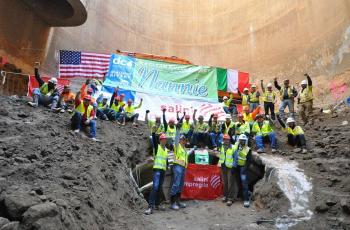Sewer Separation Projects

Overview
In addition to large underground tunnels and green infrastructure, DC Water’s Clean Rivers Project includes sewer separation to reduce combined sewer overflows (CSOs) to the District’s waterways.
Combined Sewer Outfalls are part of a combined sewer system, which captures both sanitary and stormwater flow. In the combined sewer system, there is one pipe in the streets that collects both sanitary sewage and storm water runoff from rainfall. In dry weather, the combined sewer conveys flow to the Blue Plains Wastewater Treatment Plant. During heavy rain events, the capacity of the system is exceeded and a mixture of sanitary sewage and stormwater is released by the Combined Sewer Outfalls into local waterways to prevent flooding of homes and business upstream.
Separation involves constructing new sanitary sewers to carry wastewater from homes and businesses. The existing combined sewer is converted to a separate storm sewer, eliminating the CSO outfall. Piping connections from individual residences are also reconnected to the appropriate storm/sanitary sewer. By separating this portion of the sewer system, sanitary flow is now routed to new sewers that will exclusively carry sanitary flow to Blue Plains Wastewater Treatment Plant.

Sewer Separation Locations
The highlighted CSOs pointing to the red shading on the image below show the areas where sewer separation was completed.
- Anacostia River Sewer Separation: CSO 006
- Potomac River Sewer Separation: CSO 025, CSO 026
- Rock Creek Sewer Separation: CSO 031, CSO 037, CSO 053, CSO 058, CSO 059





